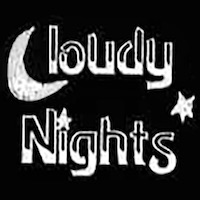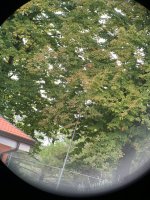Owlbarred
Well-known member

Quick note: Before purchase, a superb BF member suggested we use FaceTime to ensure my satisfaction in buying his mint NLs -- a truly appreciated and helpful courtesy!
After so many years with 8x32 ELs, this was a big change. Coping comfortably with the greater weight for a prolonged period concerned me, and I definitely noticed the difference throughout the day. A Rick Young harness surely helped, though I will likely revert to my 20-year old elastic Zeiss harness for more comfort.
No need to echo the many BF comments on the NL's superb optics -- I could not agree more. Initially, I found myself foolishly inspecting all manner of peculiar distant items just for the 'thrill' of looking. And yes, the huge 9.1° FOV -- clear to the edges -- is an engineering marvel.
I will say that the NL's haptics blew me away. The wonderful short-throw focusing wheel is the smoothest I've ever used and its location enhances both balance and focusing. For my small hands/thick fingers, the open bridge is a blessing. The unique shape of the barrels -- which felt odd at first -- is an engineering tour de force though I realize some dislike it.
EL SV (and especially earlier EL) users like me will greatly appreciate the NL's improved eyecup adjusters, with their 6 distinct clicks.
My only complaint is the eyepiece covers -- their internal staggered knurls leave outlined impressions on the rubber eyecups. Not good.
For now, the 8x32s will remain my primary binos, with the 8x42's used when I need more light, especially late in the afternoon/early evening.
Rigorous testing by Holger Merlitz has shown that the SV and NL (8x32s) were optical clones, with FOV being the notable difference. Perhaps I'm suffering from newlywed or new car syndrome, but it's the NL as a whole which so greatly impresses me. Hoping for a long union.
After so many years with 8x32 ELs, this was a big change. Coping comfortably with the greater weight for a prolonged period concerned me, and I definitely noticed the difference throughout the day. A Rick Young harness surely helped, though I will likely revert to my 20-year old elastic Zeiss harness for more comfort.
No need to echo the many BF comments on the NL's superb optics -- I could not agree more. Initially, I found myself foolishly inspecting all manner of peculiar distant items just for the 'thrill' of looking. And yes, the huge 9.1° FOV -- clear to the edges -- is an engineering marvel.
I will say that the NL's haptics blew me away. The wonderful short-throw focusing wheel is the smoothest I've ever used and its location enhances both balance and focusing. For my small hands/thick fingers, the open bridge is a blessing. The unique shape of the barrels -- which felt odd at first -- is an engineering tour de force though I realize some dislike it.
EL SV (and especially earlier EL) users like me will greatly appreciate the NL's improved eyecup adjusters, with their 6 distinct clicks.
My only complaint is the eyepiece covers -- their internal staggered knurls leave outlined impressions on the rubber eyecups. Not good.
For now, the 8x32s will remain my primary binos, with the 8x42's used when I need more light, especially late in the afternoon/early evening.
Rigorous testing by Holger Merlitz has shown that the SV and NL (8x32s) were optical clones, with FOV being the notable difference. Perhaps I'm suffering from newlywed or new car syndrome, but it's the NL as a whole which so greatly impresses me. Hoping for a long union.
Last edited:








